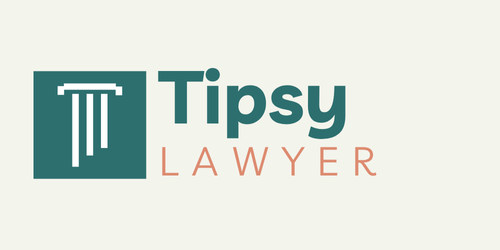In today’s complex business environment, companies must have a comprehensive understanding of the legal landscape in which they operate. This involves knowledge of industry-specific laws and regulations, as well as awareness of potential legal risks and liabilities. By staying informed about the legal context, businesses can make more educated decisions and take preventive measures to address potential legal challenges.
A critical component of understanding the legal landscape is familiarity with the laws and regulations applicable to a particular industry. For instance, healthcare businesses must adhere to strict patient privacy and data security regulations, while financial services companies must comply with consumer protection and financial reporting requirements. Understanding these industry-specific regulations enables businesses to operate in compliance with the law and avoid legal complications.
Equally important is awareness of potential legal risks and liabilities. This includes understanding the consequences of non-compliance with laws and regulations, as well as recognizing potential legal disputes that may arise during business operations. By proactively identifying and addressing potential legal risks, businesses can minimize their exposure to legal liabilities and safeguard their interests.
Key Takeaways
- Understanding the Legal Landscape:
- Stay informed about the latest legal developments and changes that may impact your business operations.
- Seek legal counsel to ensure compliance with all applicable laws and regulations.
- Compliance and Regulatory Requirements:
- Adhere to all industry-specific regulations and standards to avoid legal repercussions.
- Regularly review and update internal policies and procedures to ensure compliance with changing regulations.
- Contractual Obligations and Agreements:
- Carefully review and negotiate all contracts to protect your business interests and minimize legal risks.
- Clearly outline rights, responsibilities, and dispute resolution mechanisms in all contractual agreements.
- Intellectual Property Protection:
- Safeguard your intellectual property through patents, trademarks, and copyrights to prevent unauthorized use or infringement.
- Monitor and enforce your intellectual property rights to maintain a competitive edge in the market.
- Employment and Labor Laws:
- Stay updated on labor laws and regulations to ensure fair treatment of employees and avoid legal disputes.
- Implement clear and compliant employment contracts and policies to protect both the business and its employees.
- Dispute Resolution and Legal Remedies:
- Establish alternative dispute resolution mechanisms, such as mediation or arbitration, to resolve conflicts efficiently.
- Understand the legal remedies available in case of contractual breaches or disputes with business partners or clients.
- International Business and Trade Laws:
- Comply with international trade laws and regulations when conducting business across borders.
- Seek legal guidance to navigate complex international trade agreements and mitigate risks associated with global business operations.
Compliance and Regulatory Requirements
Understanding Specific Laws and Regulations
One key aspect of compliance and regulatory requirements is understanding the specific laws and regulations that apply to a business. This may include federal, state, and local laws, as well as industry-specific regulations. For example, businesses in the food and beverage industry must comply with food safety regulations, while companies in the technology sector must adhere to data privacy laws.
Implementing Policies and Procedures
By understanding these specific requirements, businesses can take steps to ensure compliance and avoid potential legal issues. In addition to understanding specific laws and regulations, businesses must also be proactive in implementing policies and procedures to ensure ongoing compliance. This may include conducting regular audits and assessments to identify areas of non-compliance, as well as implementing training programs to educate employees about their legal obligations.
Minimizing Risk and Demonstrating Compliance
By taking these proactive steps, businesses can minimize their risk of non-compliance and demonstrate a commitment to operating within the bounds of the law.
Contractual Obligations and Agreements
Contracts are a fundamental aspect of doing business, and understanding contractual obligations and agreements is essential for businesses to protect their interests and avoid potential legal disputes. Whether entering into agreements with customers, suppliers, or business partners, businesses must be diligent in understanding the terms and conditions of contracts and ensuring that they are legally enforceable. One key aspect of contractual obligations and agreements is understanding the terms and conditions of contracts.
This includes being aware of the rights and responsibilities of each party, as well as any specific terms related to payment, delivery, performance, and dispute resolution. By thoroughly reviewing and understanding the terms of contracts before entering into agreements, businesses can avoid potential misunderstandings and legal disputes down the line. Another important aspect of contractual obligations is ensuring that contracts are legally enforceable.
This may include ensuring that contracts are properly drafted and executed, as well as being aware of any legal requirements related to specific types of contracts. For example, certain contracts may be required to be in writing or may need to meet specific formalities to be legally enforceable. By understanding these legal requirements, businesses can ensure that their contracts are legally binding and can be enforced in the event of a dispute.
Intellectual Property Protection
| Aspect | Metric |
|---|---|
| Patents | Number of patents filed |
| Trademarks | Number of trademarks registered |
| Copyrights | Number of copyrights obtained |
| Trade Secrets | Number of trade secrets protected |
Intellectual property is a valuable asset for many businesses, and protecting intellectual property rights is essential for safeguarding innovation and creativity. Understanding intellectual property protection involves being aware of the different types of intellectual property, as well as taking proactive steps to protect intellectual property rights from infringement. One key aspect of intellectual property protection is understanding the different types of intellectual property.
This includes patents, trademarks, copyrights, and trade secrets, each of which provides different forms of protection for creative works, inventions, and brand assets. By understanding the different types of intellectual property, businesses can take steps to protect their unique creations and prevent others from using them without permission. Another important aspect of intellectual property protection is taking proactive steps to protect intellectual property rights from infringement.
This may include registering patents, trademarks, and copyrights with the appropriate government agencies, as well as implementing policies and procedures to safeguard trade secrets. By taking these proactive steps, businesses can deter potential infringers and take legal action against those who unlawfully use their intellectual property.
Employment and Labor Laws
Employment and labor laws govern the relationship between employers and employees, and understanding these laws is essential for businesses to create a fair and compliant work environment. This includes being aware of laws related to wages, hours, discrimination, harassment, and workplace safety, as well as taking proactive steps to ensure compliance with these laws. One key aspect of employment and labor laws is understanding the various laws that apply to the employer-employee relationship.
This may include federal laws such as the Fair Labor Standards Act (FLSA) and Title VII of the Civil Rights Act, as well as state-specific laws related to minimum wage, overtime pay, and anti-discrimination protections. By understanding these laws, businesses can ensure that they are providing a fair and compliant work environment for their employees. In addition to understanding employment and labor laws, businesses must also take proactive steps to ensure compliance with these laws.
This may include implementing policies and procedures related to wages, hours, workplace safety, discrimination, harassment, and employee benefits. By taking these proactive steps, businesses can minimize their risk of legal disputes related to employment practices and demonstrate a commitment to creating a fair and inclusive work environment.
Dispute Resolution and Legal Remedies

Understanding Dispute Resolution Options
One key aspect of dispute resolution is understanding the different options available for resolving conflicts. This may include informal methods such as negotiation or mediation, which can help parties reach a mutually acceptable resolution without resorting to formal legal proceedings. Alternatively, parties may choose to pursue arbitration or litigation to resolve disputes through a formal legal process.
Choosing the Right Dispute Resolution Method
By understanding these different options, businesses can choose the most appropriate method for resolving conflicts based on their specific needs and circumstances. This allows them to select the approach that best suits their goals and objectives, and to navigate the dispute resolution process with confidence.
Legal Remedies in Dispute Resolution
Another important aspect of dispute resolution is being aware of the potential legal remedies available in the event of a dispute. This may include seeking monetary damages, injunctive relief, specific performance, or other forms of legal remedies through formal legal proceedings. By understanding these potential remedies, businesses can take proactive steps to protect their interests in the event of a dispute and seek appropriate relief through the legal system.
International Business and Trade Laws
For businesses engaged in international trade and commerce, understanding international business and trade laws is essential for navigating the complexities of global business operations. This includes being aware of international trade agreements, import/export regulations, foreign investment laws, intellectual property protections in foreign jurisdictions, and other legal considerations related to conducting business across borders. One key aspect of international business and trade laws is understanding international trade agreements that may impact business operations.
This includes being aware of trade agreements such as NAFTA (North American Free Trade Agreement), CAFTA-DR (Central America Free Trade Agreement-Dominican Republic), or bilateral trade agreements between countries. By understanding these trade agreements, businesses can take advantage of preferential trade terms and navigate potential trade barriers when conducting international business. In addition to trade agreements, businesses must also be aware of import/export regulations that govern the movement of goods across borders.
This includes being aware of customs duties, tariffs, quotas, trade sanctions, export controls, and other regulatory requirements that may impact international trade transactions. By understanding these import/export regulations, businesses can ensure compliance with international trade laws and avoid potential legal issues related to cross-border trade. In conclusion, having a solid understanding of the legal landscape is essential for businesses to navigate the complexities of today’s business environment.
From compliance with laws and regulations to protecting intellectual property rights and ensuring fair employment practices, businesses must be diligent in understanding their legal obligations and taking proactive steps to mitigate potential legal risks. Additionally, understanding dispute resolution mechanisms and international business laws is essential for effectively addressing conflicts and conducting business across borders. By staying informed about the legal landscape and taking proactive steps to ensure compliance with applicable laws and regulations, businesses can protect their interests and minimize their exposure to potential legal liabilities.
If you’re interested in learning more about the legal framework surrounding environmental issues, you should check out this article on environmental law. It provides valuable insights into the regulations and policies that govern environmental protection and conservation. Understanding the legal aspects of environmental law is crucial for businesses and individuals looking to comply with environmental regulations and minimize their impact on the planet.
FAQs
What is a legal framework?
A legal framework refers to the system of laws, regulations, and rules that govern a particular industry, organization, or society. It provides the structure and guidelines for how laws are created, implemented, and enforced.
Why is a legal framework important?
A legal framework is important because it establishes the rules and standards that govern behavior and interactions within a society or organization. It provides a basis for resolving disputes, protecting rights, and promoting fairness and justice.
What are the components of a legal framework?
The components of a legal framework typically include legislation, regulations, policies, and enforcement mechanisms. It may also encompass judicial decisions, international treaties, and constitutional provisions.
How does a legal framework impact businesses?
A legal framework impacts businesses by setting out the rules and regulations that they must comply with in areas such as employment, taxation, intellectual property, and consumer protection. It also provides a framework for resolving disputes and enforcing contracts.
How can a legal framework change?
A legal framework can change through the enactment of new laws, amendments to existing laws, changes in regulations, and shifts in judicial interpretations. It can also be influenced by societal changes, technological advancements, and international developments.















